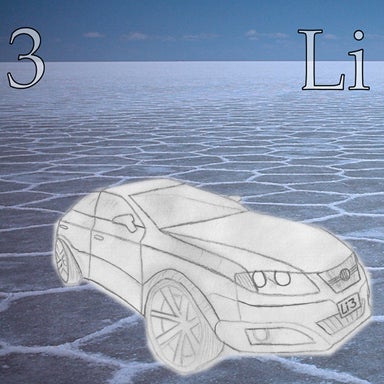Department of Chemistry, University of Waterloo, Waterloo, Ontario, Canada

Lithium and its compounds have several industrial applications, including heat-resistant glass and ceramics, high strength-to-weight alloys used in aircraft, pharmaceuticals and lithium-ion batteries, which are anticipated to power electric and hybrid electric vehicles in the near future and the focal point of my research at the University of Waterloo. In the picture, a futuristic electric vehicle is seen driving across the Salar de Uyuni, a salt flat in Bolivia, one of the richest sources of natural lithium in the world.
Brian Ellis, Department of Chemistry, University of Waterloo, Waterloo, Ontario, Canada
Atomic properties*
* Haynes, W. M. (2011). Melting, Boiling, Triple and Critical Point Temperatures of the Elements. Retrieved April 7, 2011, from CRC Handbook of Chemistry and Physics, 91st edition: http://www.hbcponline.com/
± Winter, M. (2010). Home of the Periodic Table. Retrieved April 8, 2011, from Web Elements: http://www.webelements.com/